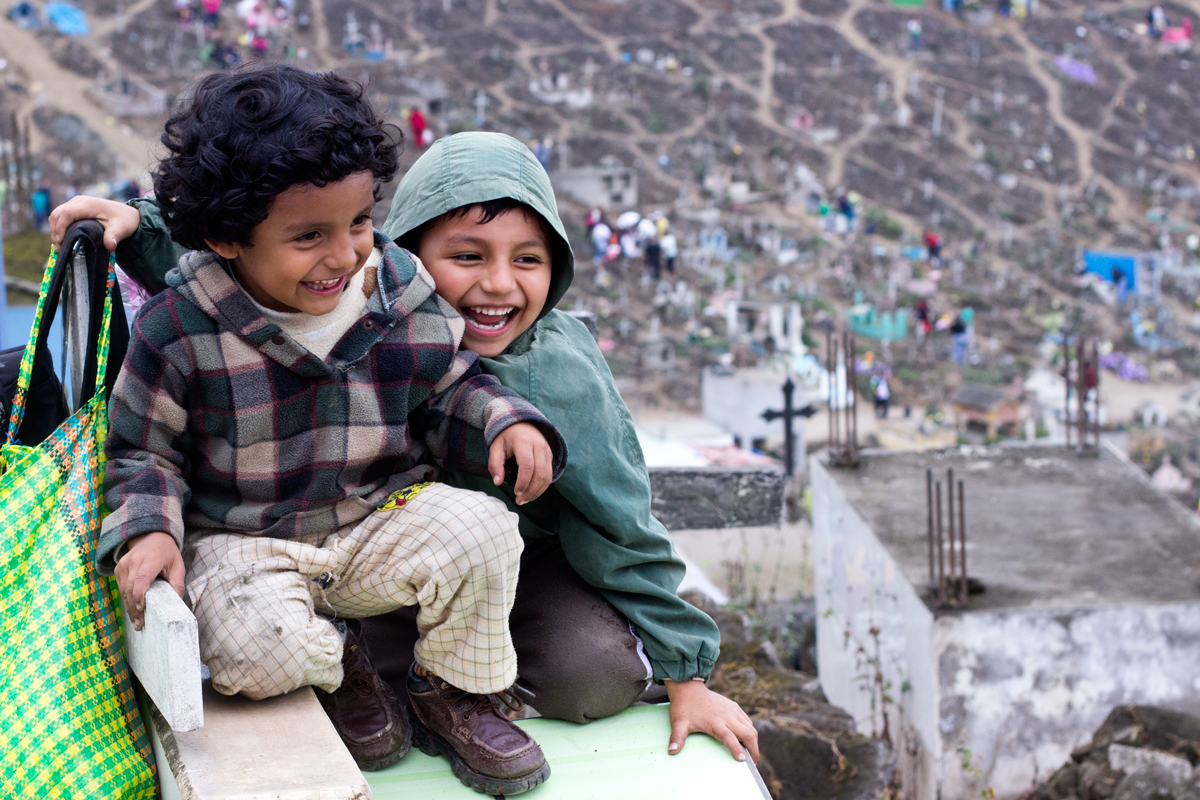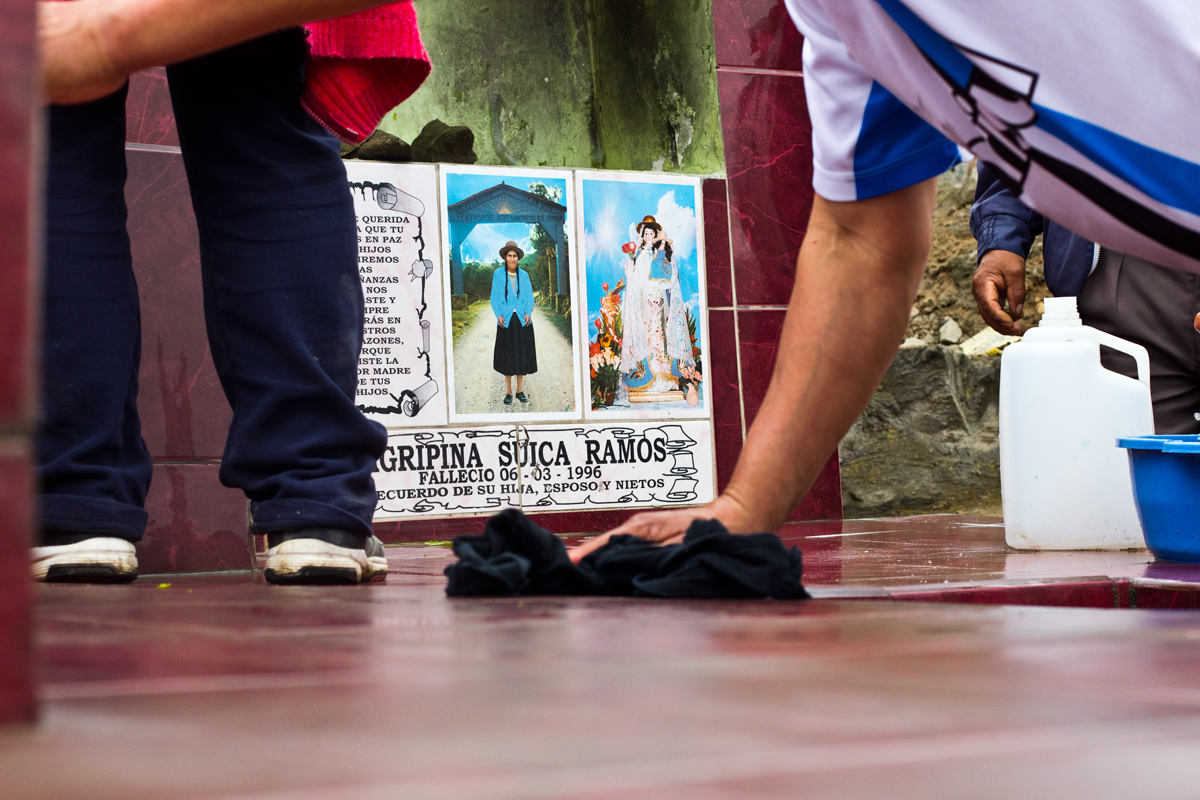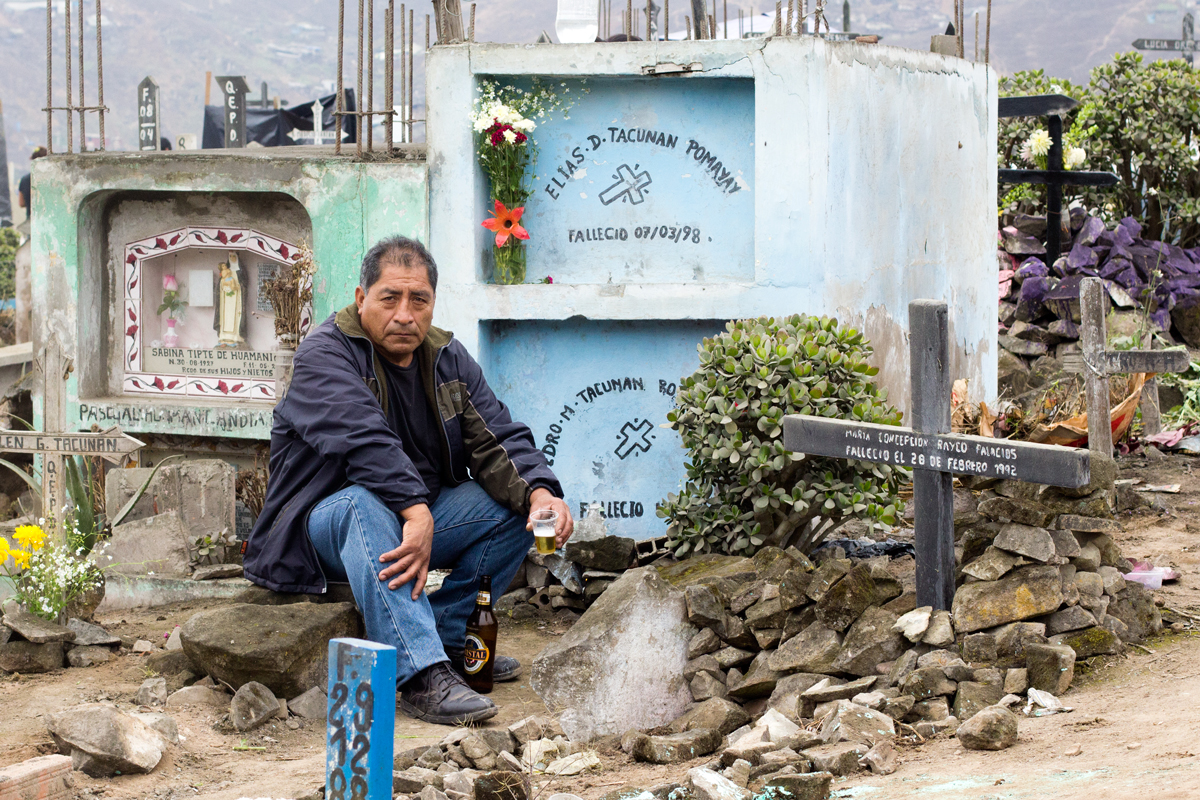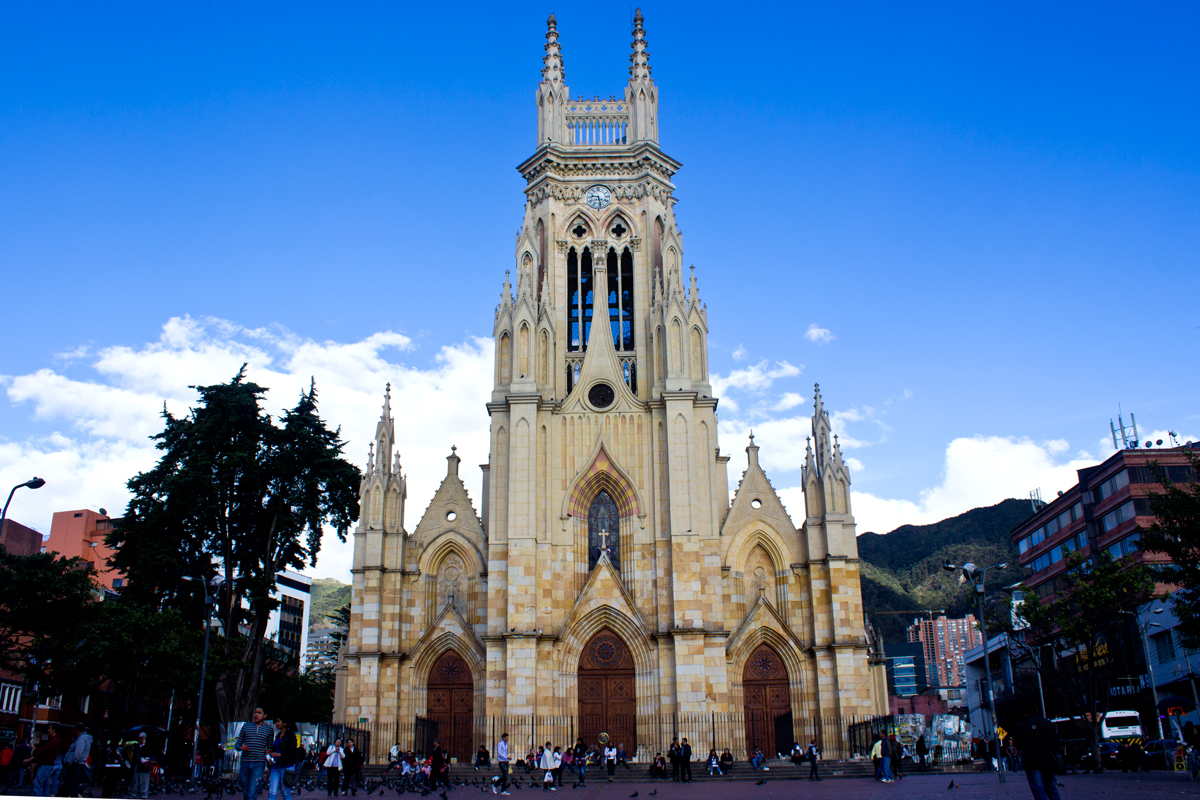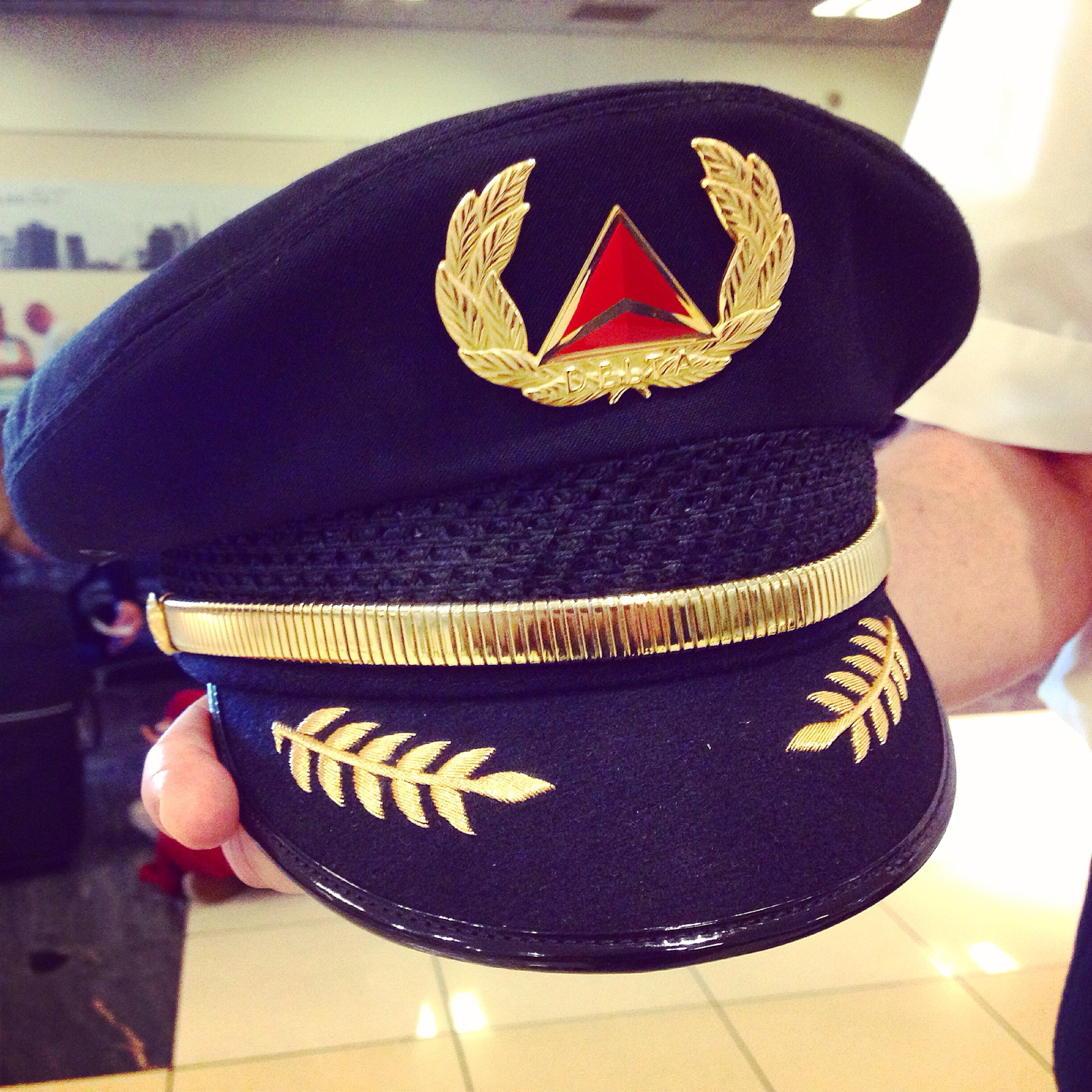Hay una fantasma!
Author: Mollie Bloudoff-Indelicato
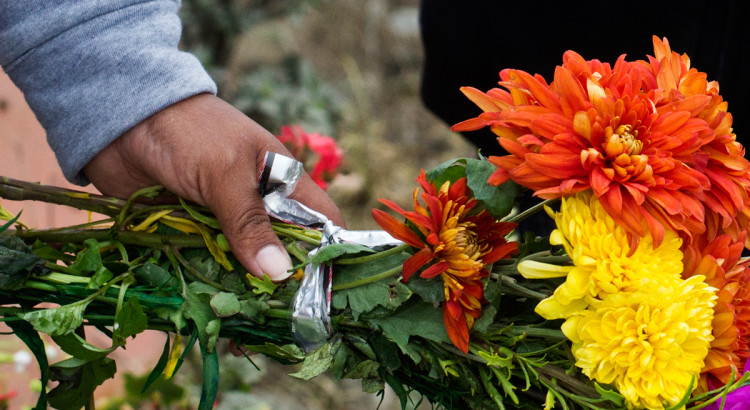
Day of the Living
Philip Bloudoff’s grave is hot in the summer, the shadow of a nearby tree just missing its mark. His tombstone was glaringly white when we buried him. I’m sure it’s a different color now, the grime of an agricultural community staining the nooks in half a dozen rose impressions. My grandfather wouldn’t have liked the roses, but he would’ve nodded approvingly at the dirt.
Two of my cousins are buried in similar cemeteries, but I’ve never seen their graves. When someone dies before their first kiss, their final resting place becomes less about remembering who they were and more about mourning who they could have been.
I try to honor them each daily by conjuring up their respective faces when I cook three-bean soup, see a turtle or play cards. It’s the little things. But I’d like to do more. I love the concept of Day of the Living.
On Day of the Living, November 1, families trod through Lima’s dusty slums to the even dustier Nueva Esperanza Cemeterio. It’s said to be the biggest or oldest cemetery in South America, but Limenians have a tendency to exaggerate. (A fish was always THIS BIG.)
They gather en masse to celebrate their lives and their families. They wash and paint the graves of loved ones. They light candles, say prayers and leave offerings of food and drink.
I saw children wrestling over graves, and tiny babies sucking on bottles. Food vendors shouted their wares, and musicians ad libbed theirs. It was noisy and smelly and colorful, and I wished it were my yearly tradition, too. What better way for your loved ones to remember you than by enjoying life together?
International Reporting: How NOT to Screw it Up
Here’s the Storify of the NASW panel I moderated at this month’s conference!
Monday’s Internal Conflict
I don’t want to move back.
I can’t imagine life in Washington, D.C.
I can’t wrap my head around Sunday evenings spent discovering the aisles of Trader Joe’s.
I’ll talk breweries and ladder climbing and the Nats—declaring love, withholding details.
I’ll juggle adjectives @DeskJob because foodmedicalhousing isn’t affordable in los grandes Estados Unidos.
I don’t want things to be so simple.
Please escort me to the nearest challenge.
Shooting From the Hip: A Post About Diversity
I’m 5 feet and 7 inches tall.
It’s a pretty standard height in the U.S. Maybe a little on the lofty side, but certainly nothing to brag about. And, unfortunately, my growth spurt hit later in life so those numbers weren’t much use as a kid pining after coveted roller coaster rides.
But, now, as a journalist, I have to pay attention to these otherwise insignificant measurements. I am constantly shooting photos from a 5’5″ perspective (dang, my forehead is really 2 inches?!). I’ve gotten some good shots from this perspective, but that’s the problem—it’s only one perspective.
In order to truly see the world, you have to look at it from all angles. I recognize the flaw in my work and try to compensate as best I can. It’s not uncommon to see me scaling a tree, twisting into odd contortions and dropping down onto the floor. Lately, I’ve been walking around and shooting from the hip just to see what happens (see the photo above!).
It’s a start, but if I really wanted to get better at my craft, I’d carry around a step stool and scope out the scene a few days beforehand.
Of course, perspectives go far deeper than camera angles.
We need to include more diverse perspectives in all aspects of news—especially in my field, science journalism. The National Association of Science Writers (NASW) has an obvious diversity problem. We’re a very Caucasian group, and this means we’re missing out on a LOT of valuable input and ideas.
So how do we fix the issue? It’s going to take a lot more than a step stool.
I attended a panel at the NASW conference this weekend that offered some great solutions, which are important for every newsroom—not just us science peeps. Here were the panel’s three, main takeaways:
- Go out of your way to get opinions from a diverse group of people. And, remember, diversity isn’t just ethnicity. Diversity is also socioeconomic status, gender, age, national origin, sexual orientation, education, etc. etc. etc.
- Be an advocate for diversity. You were hired because you knew someone. Perhaps a friend recommended you. Maybe you met your future boss through Twitter. But, let’s face it, it’s not about what you know, it’s about who you know. If you see a job opening, it’s your responsibility to spread the word. Email the heads of NABJ, NAHJ, AAJA, etc. Contact journos who you’d think would make a good fit. A talented candidate shouldn’t get passed over just because they never found out about the gig!
- Pay attention to the smart people who are talking about diversity. Ignorance is an excuse, but it’s a really crappy one. Here are some awesome resources written by communicators whom I admire. Check out their thoughts:
Culture Dish: Promoting Diversity in Science Writing
Twitter List of Diverse Science Writers
Supporting Diversity in Science Writing
Diversifying Science Journalism
Storify: The Diversity Conversation
The Pilot’s Food Stamps
My conversation with a pilot in the Atlanta airport:
Me: Is it difficult to remember the strings of letters and numbers that the air controllers throw at you?
Pilot: Ah, jeeze, not really. I mean, I’ve been flying since I was 15. That’s 22 years now. I guess you just learn after years of practice.
Me: Wow! Since you were 15? So you’re living the dream? That’s impressive. Not many people actualize their dreams.
Pilot: In the beginning, things were really rough. The pay is nothing. I had friends who were on food stamps.
Me: A pilot on food stamps?! That seems wrong.
Pilot: Times are tough. There’s just no money. And when you’re at the bottom of the totem pole you don’t make enough to live.


